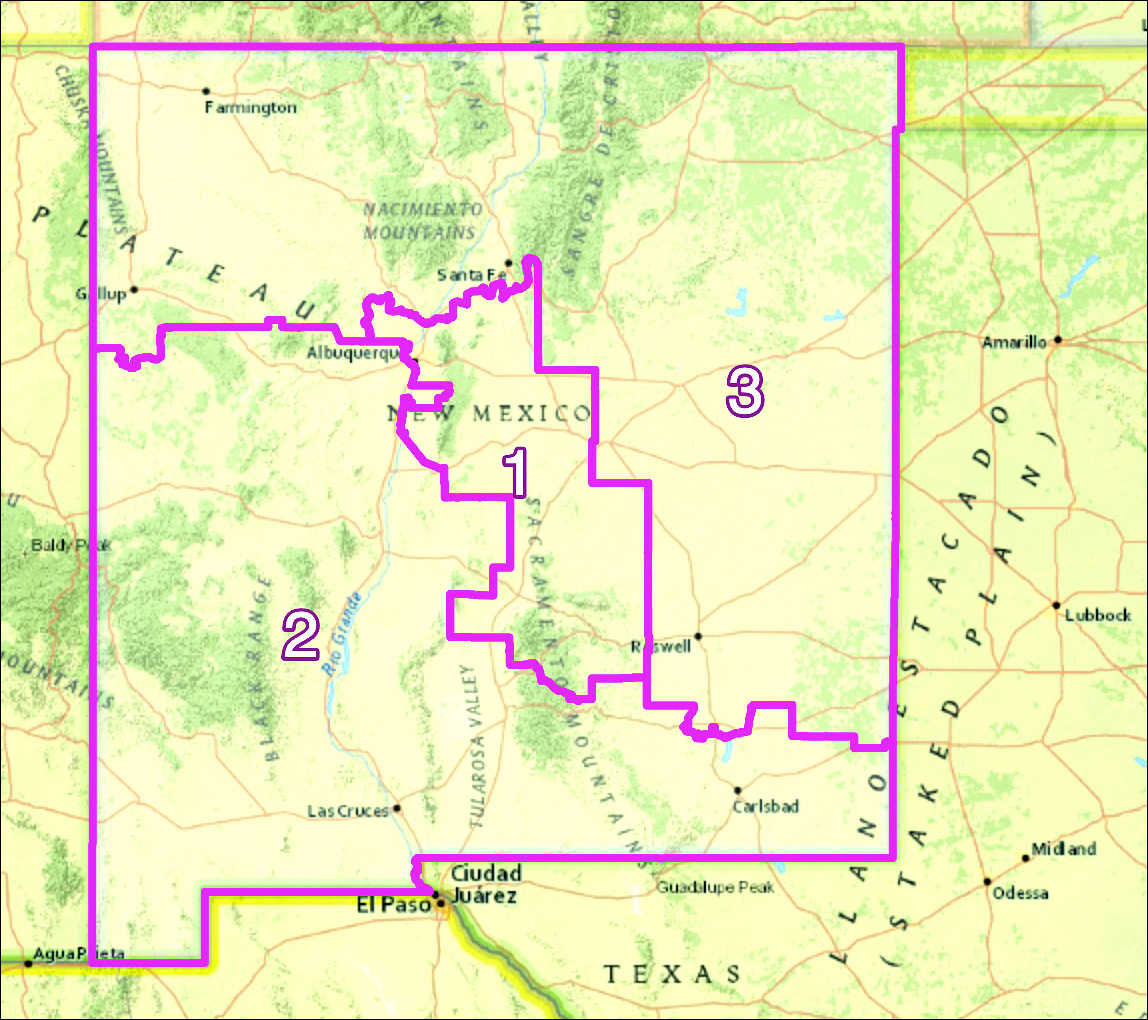By Jim Ellis
Dec. 15, 2021 — Though only a three-congressional district state, New Mexico is playing an important role in the 2021 redistricting cycle. The state is one of only four where Democrats fully control the redistricting process and can make gains.
The map that passed the legislature Monday and which was immediately sent to Gov. Michelle Lujan Grisham (D) for her signature appears to clinch the one-seat gain that national Democrats need from the state. On the other hand, it is likely that at least one of their current seats becomes more vulnerable.
Though Democrats have 15 legislative trifectas — that is where they hold the offices of governor, state Senate, and state House of Representatives — they effectively have only four for redistricting. In five of their trifecta states, redistricting has been sent to a citizens or politician (New Jersey) commission. In another six, they are maxed, meaning the Democrats already have all the seats that they can possibly win in each domain.
Ironically, the current Land of Enchantment map needed only minor adjustments to bring the redistricting plan into legal population compliance. The state’s per district resident quota is 705,841 individuals, and the three current districts were only between 3,082 and 11,290 people away from being in full compliance. Districts 2 and 3 needed to shed a combined 11,290 individuals to District 1, and the map would have balanced.
Instead, the Democratic leadership made major changes all centered around transforming freshman Rep. Yvette Herrell’s (R-Alamogordo) 2nd CD into a Democratic advantage. The US Department of Justice just filed suit against the Texas redistricting map under a partisan gerrymander argument, so it is curious to see whether they follow the same course and bring forth a similar partisan gerrymander lawsuit in New Mexico and Illinois, places where Democrats control the redistricting pen.
New Mexico is also interesting in that all three of the state’s delegation members, Reps. Melanie Stansbury, (D-Albuquerque) and Teresa Leger Fernandez (D-Santa Fe), as well as Herrell, are freshmen. In fact, Stansbury is even behind the other two in seniority since she won her seat in a June 1 special election to replace resigned Rep. Deb Haaland (D), who left the House to become US Interior Secretary in the Biden Administration.
For the first time, the redesigned New Mexico congressional map splits the state’s dominant city of Albuquerque. Drawing the southern 2nd District into the Albuquerque metropolitan area provides the Democrats the ability to enhance the party’s chances of flipping the seat. Throughout New Mexico’s history, the city has been fully contained within the 1st Congressional District.
As a basis for the partisan statistical analysis, the table below shows the last two presidential election results:
| District 1 – | Rep. Melanie Stansbury |
|---|---|
| 2020 – Biden | 60.2 -37.4% |
| 2016 – Clinton | 51.6 – 35.1% |
| New Plan: | 56.5% Democratic Factor |
| District 2 – | Rep. Yvette Herrell |
|---|---|
| 2020 Trump | 54.9 – 43.1% |
| 2016 Trump – | 50.1 – 39.9% |
| New Plan: | 51.9% Democratic Factor |
| District 3 – | Rep. Teresa Leger Fernandez |
|---|---|
| 2020 Biden – | 57.7 – 40.1% |
| 2016 Clinton – | 51.8 – 36.7% |
| New Plan: | 53.7% Democratic Factor |
According to the Dave’s Redistricting App statisticians, the new 1st District has a Democratic vote factor of 56.5 percent, which is the safest of the three districts for the party. The 2nd District would return a 51.9 percent Democratic lean, and the 3rd, a 53.7 percent Dem basis.
Obviously, the new plan increases Democrats’ prospects significantly in District 2, but an incumbent running in what could be a favorable Republican year would have a fighting chance to survive. Stretching the map to its partisan max may work, but it also could produce unintended consequences. For example, the new plan gives freshman Rep. Fernandez a more competitive seat when adding a sizable number of eastern New Mexico Republicans to her northern state district.
In New Mexico, Hispanics are the dominant population. According to the 2020 census, the state’s Hispanic population reaches 47.7 percent as compared to the non-Hispanic White figure of 37.1 percent.
According to the past census updates, the current 1st District had a Hispanic Citizen’s Voting Age Population (C-VAP) figure of 49.2 percent, but is reduced to 37.3 percent under the new map. The 2nd, which was the highest Hispanic district in the state despite being the lone Republican seat, increases their percentage from 53.7 to 56.1 percent. The 3rd, which features a current Hispanic population figure of 40.5 percent basically remains constant under the new map at 40.1 percent.
It remains to be seen if attempting to draw a solid 3D-0R map will hold through the decade, or even in 2022. With a potential over-emphasis on the Biden-Trump result, and seeing a better trend for Republicans among Hispanics, we could see two competitive races develop here next year, which certainly would spoil the Democrats conceived strategy.

